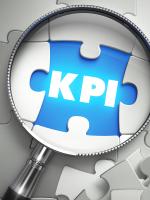CHICAGO — When the owner of a drycleaning business only has a single location to manage, it’s easy to keep track of the company’s personnel, processes and progress. As the business grows and adds more storefronts, plants and routes, however, leaders must learn to organize, delegate and set up systems to ensure that all customers get the same high level of service.
Clear Expectations
Setting the overall goals in place and letting team members know what is expected — and what isn’t tolerated — is crucial in setting up systems that are necessary in operating multiple locations and routes.
Norman Way is the vice president of Puritan Cleaners in Richmond, Virginia, and has been with the company since 2004. His company has 13 stores, 14 routes, 190 team members, and serves more than 20,000 unique customers a month.
“We sum up our expectations simply as ‘Q3P’ — Quality through People, Product and Presentation,” Way says. “There’s nothing new or special about it. It just happens to be Puritan Cleaners’ package. It’s a simple temperament that we can use to coach any team member through almost any situation. Most importantly, it places our people first, and once we do that, it helps everything else fall into place a lot better.”
Mary Mills is the president of Sir Galloway Dry Cleaners, a Miami-based company that has six storefronts, one plant, four routes and two restoration centers.
Training is key when it comes to setting expectations, Mills says, followed by watching closely to see if those lessons are being implemented the way she envisioned.
“Are we doing things the Galloway way?” she asks. “We train continually, and retrain if necessary.”
While Gerrayl Bryson has only been in the drycleaning industry since March 2023, he brings a wealth of leadership experience with him. Bryson served 12 years in the U.S. Army and achieved the rank of captain. After leaving the military, he spent a year as a government project manager before becoming general manager at Tiffany Couture Cleaners in Las Vegas.
While the company has just one storefront and one plant, the 12 different routes it operates demand that he lead a decentralized team.
A quote Bryson takes to heart is that “the greatest misconception about communication is that it ever occurred.” Through clear articulation, Bryson says, a leader can ensure the team is on the same page when it comes to what is expected in terms of customer service, goals and values important to the brand.
“When I speak about our visions, our missions and our goals,” he says, “I want to make sure that it’s heard, it’s understood, and it’s felt. I’ll explain that as clearly as I can, using simple and concise language. So now you know what I’m asking of you, I’m going to set clear expectations with deadlines, milestones, and any specific guidelines.”
The Art of Communication
Having two-way lines of communication, where teams are not simply spoken to but are asked for their feedback, is crucial for Mills.
“I personally make store visits almost daily at different times and at different shifts,” she says. She also uses the company’s drive-through lanes to assess the customer service, and has her CSR manager and two assistant managers meet monthly with their morning and afternoon CSR teams to review their activities and to listen to their concerns.
“It is imperative to have weekly meetings with all my managers,” she says. “In the meeting, we create an ongoing list of priorities and long-term goals. Every week, the managers are accountable for completion of their individual list and for a report on every topic.”
Way has a similar process for communicating with his team: “We hold weekly conference call sessions with our store managers and, in return, every one of those managers holds a daily huddle to convey information and affirmations with their teammates. And we try to be really clear on our values, so our team can apply them to any opportunity that arises.”
“Listening and allowing feedback builds trust, especially when you take a great idea and put it into action,” Mills says. “I always give credit to the one who suggested the new idea being applied.”
Come back Thursday for Part 2 of this series, where we’ll examine the role of trust and leadership in running multiple locations.
Have a question or comment? E-mail our editor Dave Davis at [email protected].





































































